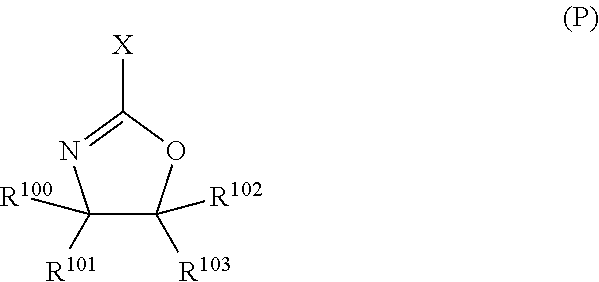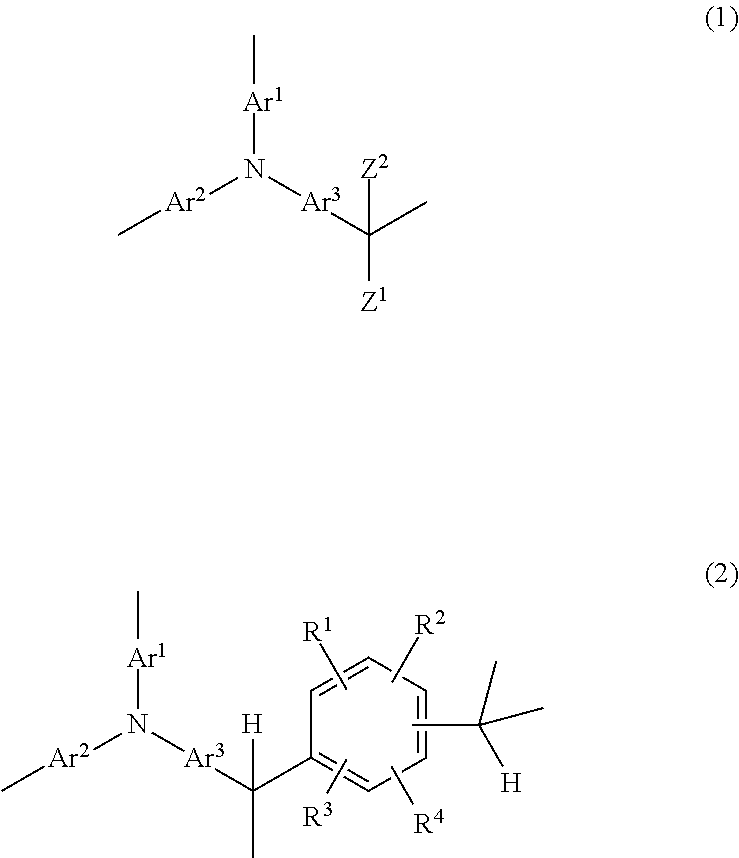Composition for forming an active material composite, an active material composite, and a method for producing an active material composite
a technology of active materials and composites, applied in the direction of cell electrodes, electrical equipment, cell components, etc., can solve the problems of poor cycle characteristics, small and light electronic devices, and large amount of energy consumed, and achieve excellent cycle and rate characteristics
- Summary
- Abstract
- Description
- Claims
- Application Information
AI Technical Summary
Benefits of technology
Problems solved by technology
Method used
Image
Examples
example 1-1
Preparation of Conductive Material Dispersion A2
[0148]The following were mixed together: 2.0 g of the oxazoline polymer-containing aqueous solution Epocros WS-700 (Nippon Shokubai Co., Ltd.; solids concentration: 25 mass %; weight-average molecular weight: 4×104; amount of oxazoline groups: 4.5 mmol / g) as the dispersant, and 47.5 g of distilled water, in addition to which 0.5 g of MWCNTs (TC-2010, manufactured by Toda Kogyo Corp.) as the conductive material was mixed. The resulting mixture was subjected to ultrasonic treatment at room temperature for 30 minutes using a probe-type ultrasonicator, to obtain Conductive Material Dispersion A1, a black, uniform dispersion of MWCNTs with no precipitates.
[0149]To 50 g of the obtained Conductive Material Dispersion A1, 0.88 g of Epocros WS-700 (Nippon Shokubai Co., Ltd.; solids concentration: 25 mass %; weight-average molecular weight: 4×104; amount of oxazoline groups: 4.5 mmol / g) and 49.1 g of distilled water were added and stirred to obt...
example 1-2
Preparation of Conductive Material Dispersion A3
[0150]Conductive Material Dispersion A3 was obtained by the same method as in Example 1-1, except that the MWCNTs were replaced with AMC (manufactured by Ube Industries, Ltd.).
example 2-1
Production of Active Material Composite P1
[0153]10 g of anatase type titanium dioxide (Cat No. 637254, manufactured by Sigma-Aldrich, primary particle diameter: 25 nm or less) was mixed with 490 g of water. The resulting mixture was subjected to ultrasonic treatment at room temperature for 30 minutes using a bath-type ultrasonicator to obtain a white active material dispersion. To this dispersion, 105 g of Conductive Material Dispersion A2, produced in Example 1-1, and 499 g of distilled water were mixed. The resulting mixture was subjected to ultrasonic treatment at room temperature for 30 minutes to obtain a black dispersion (a composition for forming an active material composite). Then, the dispersion obtained was dried using a spray dryer. The drying conditions were as follows: drying gas: air, inlet temperature: 210° C., atomizing air pressure: 0.1 MPa, aspirator flow rate: 0.50 m3 / min, and mixture feed rate: 3.5 g / min. The outlet temperature was 85 f 3° C. The dispersion was d...
PUM
| Property | Measurement | Unit |
|---|---|---|
| temperature | aaaaa | aaaaa |
| primary particle diameter | aaaaa | aaaaa |
| primary particle diameter | aaaaa | aaaaa |
Abstract
Description
Claims
Application Information
 Login to View More
Login to View More - R&D
- Intellectual Property
- Life Sciences
- Materials
- Tech Scout
- Unparalleled Data Quality
- Higher Quality Content
- 60% Fewer Hallucinations
Browse by: Latest US Patents, China's latest patents, Technical Efficacy Thesaurus, Application Domain, Technology Topic, Popular Technical Reports.
© 2025 PatSnap. All rights reserved.Legal|Privacy policy|Modern Slavery Act Transparency Statement|Sitemap|About US| Contact US: help@patsnap.com



